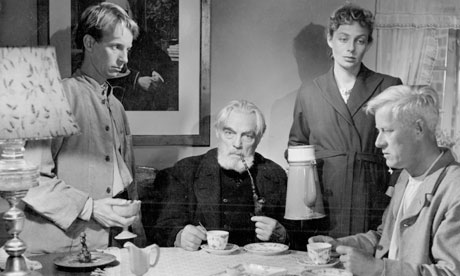
Carl Theodor Dreyer (1889-1968) worked in the Danish cinema from 1912, making eight films in the silent era and a mere six after the coming of sound, of which this austere masterpiece, released in 1955 and being revived by the NFT in a valuable retrospective, is the greatest. It's based on a 1932 play by the Lutheran priest Kaj Munk (murdered by the Nazis during the occupation), largely set in a claustrophobic single-storey farmhouse in Jutland, and is a claustrophobic affair, within a remote Christian community, centring on the enduring conflict between spiritual transcendence and the worldly life. There are only 114 shots, each averaging over a minute, only three close-ups, and the film demands and rewards the closest attention. Visitors to the Royal Academy's 2008 exhibition featuring the bleak, haunting, minimalist interiors of the Danish painter Vilhelm Hammershøi (1864-1916), about whom Michael Palin made an admiring documentary, will recognise affinities and note Dreyer's acknowledged debt.

